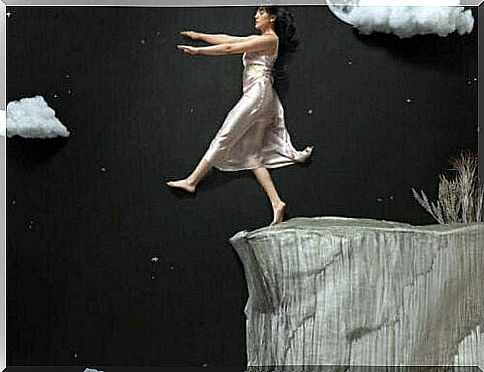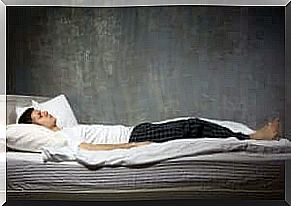Sleepwalker Behavior: Neuroscience

Sleepwalking is a well-known sleep disorder. A sleepwalker has an unconsciousness that makes him wander. Sleepwalkers can either wander aimlessly or do more complex things like cooking or driving.
Sleepwalking has two determining factors:
- complex behavior
- an altered state of consciousness
During a sleepwalk, sleepwalkers exhibit unconscious behavior, are unable to respond to external stimuli and have high autonomic activity (e.g. sweating and increased heart rate).
If they wake up during an episode, they feel confused. On the other hand, they usually go back to bed alone and stay asleep as if nothing happened.

The different stages of sleep
To understand this condition, you must first understand how sleep works. In terms of muscle tone, brain activity and the motor activity of the eyes, there are two types of sleep:
- NREM (non-rapid eye movement) sleep. NREM sleep is divided into N1 (when sleep begins), N2 (light sleep), and N3 (deep sleep).
- REM ( rapid eye movement ) sleep.
So while you sleep, you move from one stage to another, and all these stages are essential for proper rest.
The parasomnia of NREM sleep
Sleepwalking takes place during N3 (English link). It is classified as an NREM parasomnia along with nightmares and confusional arousal (confusion on waking in the middle of the night). There is a theory that these parasomnias are part of a single arousal disorder, but with different events.
Sleepwalks are preceded by a high number of slow-wave sleep phases. Slow waves, or delta, represent rhythmic, synchronized, and slow activity in the front and center of the brain. They represent a high voltage phase and an inactivity wave lasting milliseconds.

What goes on in the brains of sleepwalkers?
Sleepwalking, although it is a well-known phenomenon and has been studied for more than five decades, is still a mystery. Nobody knows exactly what causes it. However, there are several hypotheses.
On the one hand, there is a theory that it could be a slow-wave sleep disorder. A sleepwalker’s brain does not appear to have REM continuity, but rapid changes in frequency and magnitude.
This is in contrast to the brain of a non-sleepwalker. When someone sleepwalks, there are more confusional arousals during slow-wave sleep and more brain activity during the rest of the stages.
On the other hand, others believe that the sleepwalking is an arousal disorder or a brain activity disorder. From this perspective, a sleepwalker is between a state of full brain activation and an NREM sleep stage.
This means that they are neither fully awake nor asleep. This suggests the existence of minor prefrontal activity when the opposite should be the case. However, we still don’t know why this activity is happening.

Finally
Sleepwalking is related to several factors, such as:
- sleep deprivation or fragmentation
- fever,
- substance use
- stress
- pregnancy
In that way, pathologies such as the following can also cause sleepwalking:
- obsessive disorders
- schizophrenia
- fear
- depression
- encephalopathies
- cognitive disorders
- migraine
The relationship with these symptomatologies has led doctors to believe that neurotransmitters may be related. Although there is no real treatment for sleepwalking, the following are commonly prescribed to treat sleepwalking:
- benzodiazepines
- anti epileptics
- antidepressants
- melatonin
- stress relievers









